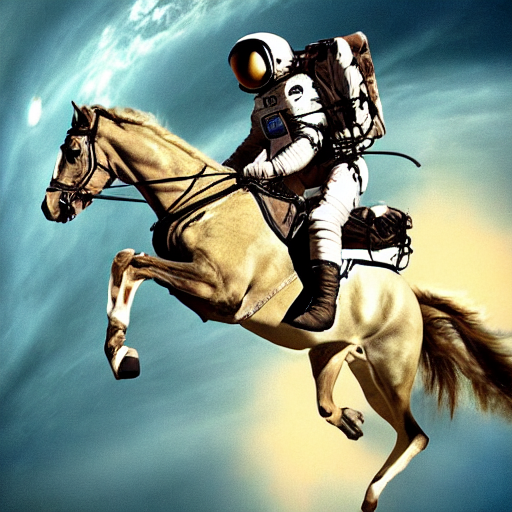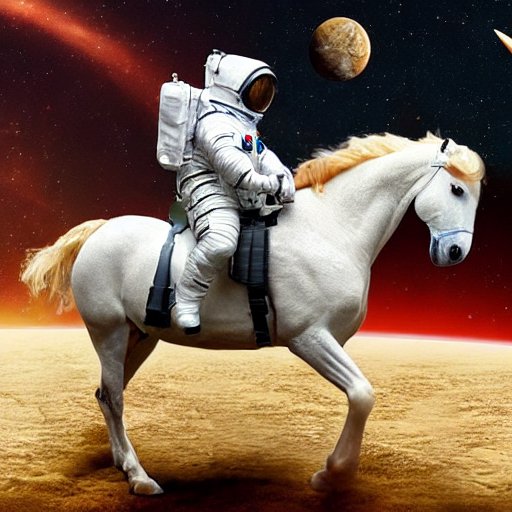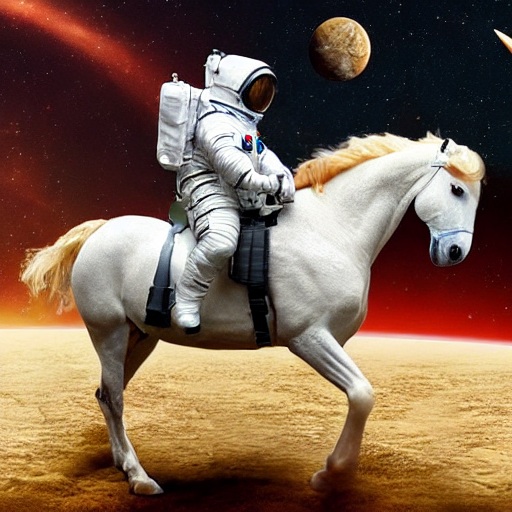|
|
2 years ago | |
|---|---|---|
| .github | 3 years ago | |
| assets | 3 years ago | |
| python_coreml_stable_diffusion | 2 years ago | |
| swift | 3 years ago | |
| tests | 3 years ago | |
| .gitignore | 3 years ago | |
| ACKNOWLEDGEMENTS | 3 years ago | |
| CODE_OF_CONDUCT.md | 3 years ago | |
| CONTRIBUTING.md | 3 years ago | |
| LICENSE.md | 3 years ago | |
| Package.swift | 3 years ago | |
| README.md | 3 years ago | |
| requirements.txt | 3 years ago | |
| setup.py | 3 years ago | |
README.md
Core ML Stable Diffusion
Run Stable Diffusion on Apple Silicon with Core ML

This repository comprises:
python_coreml_stable_diffusion, a Python package for converting PyTorch models to Core ML format and performing image generation with Hugging Face diffusers in PythonStableDiffusion, a Swift package that developers can add to their Xcode projects as a dependency to deploy image generation capabilities in their apps. The Swift package relies on the Core ML model files generated bypython_coreml_stable_diffusion
If you run into issues during installation or runtime, please refer to the FAQ section. Please refer to the System Requirements section before getting started.
Example Results
There are numerous versions of Stable Diffusion available on the Hugging Face Hub. Here are example results from three of those models:
--model-version |
stabilityai/stable-diffusion-2-base | CompVis/stable-diffusion-v1-4 | runwayml/stable-diffusion-v1-5 |
|---|---|---|---|
| Output |  |
 |
 |
| M1 iPad Pro 8GB Latency (s) | 29 | 38 | 38 |
| M1 MacBook Pro 16GB Latency (s) | 24 | 35 | 35 |
| M2 MacBook Air 8GB Latency (s) | 18 | 23 | 23 |
Please see Important Notes on Performance Benchmarks section for details.
System Requirements
The following is recommended to use all the functionality in this repository:
| Python | macOS | Xcode | iPadOS, iOS |
|---|---|---|---|
| 3.8 | 13.1 | 14.2 | 16.2 |
Using Ready-made Core ML Models from Hugging Face Hub
Click to expand
🤗 Hugging Face ran the conversion procedure on the following models and made the Core ML weights publicly available on the Hub. If you would like to convert a version of Stable Diffusion that is not already available on the Hub, please refer to the Converting Models to Core ML.
If you want to use any of those models you may download the weights and proceed to generate images with Python or Swift.
There are several variants in each model repository. You may clone the whole repos using git and git lfs to download all variants, or selectively download the ones you need.
To clone the repos using git, please follow this process:
Step 1: Install the git lfs extension for your system.
git lfs stores large files outside the main git repo, and it downloads them from the appropriate server after you clone or checkout. It is available in most package managers, check the installation page for details.
Step 2: Enable git lfs by running this command once:
git lfs install
Step 3: Use git clone to download a copy of the repo that includes all model variants. For Stable Diffusion version 1.4, you'd issue the following command in your terminal:
git clone https://huggingface.co/apple/coreml-stable-diffusion-v1-4
If you prefer to download specific variants instead of cloning the repos, you can use the huggingface_hub Python library. For example, to do generation in Python using the ORIGINAL attention implementation (read this section for details), you could use the following helper code:
from huggingface_hub import snapshot_download
from huggingface_hub.file_download import repo_folder_name
from pathlib import Path
import shutil
repo_id = "apple/coreml-stable-diffusion-v1-4"
variant = "original/packages"
def download_model(repo_id, variant, output_dir):
destination = Path(output_dir) / (repo_id.split("/")[-1] + "_" + variant.replace("/", "_"))
if destination.exists():
raise Exception(f"Model already exists at {destination}")
# Download and copy without symlinks
downloaded = snapshot_download(repo_id, allow_patterns=f"{variant}/*", cache_dir=output_dir)
downloaded_bundle = Path(downloaded) / variant
shutil.copytree(downloaded_bundle, destination)
# Remove all downloaded files
cache_folder = Path(output_dir) / repo_folder_name(repo_id=repo_id, repo_type="model")
shutil.rmtree(cache_folder)
return destination
model_path = download_model(repo_id, variant, output_dir="./models")
print(f"Model downloaded at {model_path}")
model_path would be the path in your local filesystem where the checkpoint was saved. Please, refer to this post for additional details.
Converting Models to Core ML
Click to expand
Step 1: Create a Python environment and install dependencies:
conda create -n coreml_stable_diffusion python=3.8 -y
conda activate coreml_stable_diffusion
cd /path/to/cloned/ml-stable-diffusion/repository
pip install -e .
Step 2: Log in to or register for your Hugging Face account, generate a User Access Token and use this token to set up Hugging Face API access by running huggingface-cli login in a Terminal window.
Step 3: Navigate to the version of Stable Diffusion that you would like to use on Hugging Face Hub and accept its Terms of Use. The default model version is CompVis/stable-diffusion-v1-4. The model version may be changed by the user as described in the next step.
Step 4: Execute the following command from the Terminal to generate Core ML model files (.mlpackage)
python -m python_coreml_stable_diffusion.torch2coreml --convert-unet --convert-text-encoder --convert-vae-decoder --convert-safety-checker -o <output-mlpackages-directory>
WARNING: This command will download several GB worth of PyTorch checkpoints from Hugging Face. Please ensure that you are on Wi-Fi and have enough disk space.
This generally takes 15-20 minutes on an M1 MacBook Pro. Upon successful execution, the 4 neural network models that comprise Stable Diffusion will have been converted from PyTorch to Core ML (.mlpackage) and saved into the specified <output-mlpackages-directory>. Some additional notable arguments:
-
--model-version: The model version defaults to CompVis/stable-diffusion-v1-4. Developers may specify other versions that are available on Hugging Face Hub, e.g. stabilityai/stable-diffusion-2-base & runwayml/stable-diffusion-v1-5. -
--bundle-resources-for-swift-cli: Compiles all 4 models and bundles them along with necessary resources for text tokenization into<output-mlpackages-directory>/Resourceswhich should provided as input to the Swift package. This flag is not necessary for the diffusers-based Python pipeline. -
--chunk-unet: Splits the Unet model in two approximately equal chunks (each with less than 1GB of weights) for mobile-friendly deployment. This is required for Neural Engine deployment on iOS and iPadOS. This is not required for macOS. Swift CLI is able to consume both the chunked and regular versions of the Unet model but prioritizes the former. Note that chunked unet is not compatible with the Python pipeline because Python pipeline is intended for macOS only. Chunking is for on-device deployment with Swift only. -
--attention-implementation: Defaults toSPLIT_EINSUMwhich is the implementation described in Deploying Transformers on the Apple Neural Engine.--attention-implementation ORIGINALwill switch to an alternative that should be used for CPU or GPU deployment. Please refer to the Performance Benchmark section for further guidance. -
--check-output-correctness: Compares original PyTorch model's outputs to final Core ML model's outputs. This flag increases RAM consumption significantly so it is recommended only for debugging purposes.
Image Generation with Python
Click to expand
Run text-to-image generation using the example Python pipeline based on diffusers:
python -m python_coreml_stable_diffusion.pipeline --prompt "a photo of an astronaut riding a horse on mars" -i <output-mlpackages-directory> -o </path/to/output/image> --compute-unit ALL --seed 93
Please refer to the help menu for all available arguments: python -m python_coreml_stable_diffusion.pipeline -h. Some notable arguments:
-i: Should point to the-odirectory from Step 4 of Converting Models to Core ML section from above.--model-version: If you overrode the default model version while converting models to Core ML, you will need to specify the same model version here.--compute-unit: Note that the most performant compute unit for this particular implementation may differ across different hardware.CPU_AND_GPUorCPU_AND_NEmay be faster thanALL. Please refer to the Performance Benchmark section for further guidance.--scheduler: If you would like to experiment with different schedulers, you may specify it here. For available options, please see the help menu. You may also specify a custom number of inference steps by--num-inference-stepswhich defaults to 50.
Image Generation with Swift
Click to expand
System Requirements
Building (recommended):
- Xcode 14.2
- Command Line Tools for Xcode 14.2
Check developer.apple.com for the latest versions.
Running (minimum):
| Mac | iPad* | iPhone* |
|---|---|---|
| macOS 13.1 | iPadOS 16.2 | iOS 16.2 |
| M1 | M1 | iPhone 12 Pro |
You will also need the resources generated by the --bundle-resources-for-swift-cli option described in Converting Models to Core ML
* Please see FAQ Q6 regarding deploying on iPad and iPhone.
Example CLI Usage
swift run StableDiffusionSample "a photo of an astronaut riding a horse on mars" --resource-path <output-mlpackages-directory>/Resources/ --seed 93 --output-path </path/to/output/image>
The output will be named based on the prompt and random seed:
e.g. </path/to/output/image>/a_photo_of_an_astronaut_riding_a_horse_on_mars.93.final.png
Please use the --help flag to learn about batched generation and more.
Example Library Usage
import StableDiffusion
...
let pipeline = try StableDiffusionPipeline(resourcesAt: resourceURL)
pipeline.loadResources()
let image = try pipeline.generateImages(prompt: prompt, seed: seed).first
On iOS, the reduceMemory option should be set to true when constructing StableDiffusionPipeline
Swift Package Details
This Swift package contains two products:
StableDiffusionlibraryStableDiffusionSamplecommand-line tool
Both of these products require the Core ML models and tokenization resources to be supplied. When specifying resources via a directory path that directory must contain the following:
TextEncoder.mlmodelc(text embedding model)Unet.mlmodelcorUnetChunk1.mlmodelc&UnetChunk2.mlmodelc(denoising autoencoder model)VAEDecoder.mlmodelc(image decoder model)vocab.json(tokenizer vocabulary file)merges.text(merges for byte pair encoding file)
Optionally, for image2image, in-painting, or similar:
VAEEncoder.mlmodelc(image encoder model)
Optionally, it may also include the safety checker model that some versions of Stable Diffusion include:
SafetyChecker.mlmodelc
Note that the chunked version of Unet is checked for first. Only if it is not present will the full Unet.mlmodelc be loaded. Chunking is required for iOS and iPadOS and not necessary for macOS.
Example Swift App
Click to expand
🤗 Hugging Face created an open-source demo app on top of this library. It's written in native Swift and Swift UI, and runs on macOS, iOS and iPadOS. You can use the code as a starting point for your app, or to see how to integrate this library in your own projects.
Hugging Face has made the app available in the Mac App Store.
Performance Benchmark
Click to expand
Standard CompVis/stable-diffusion-v1-4 Benchmark
| Device | --compute-unit |
--attention-implementation |
Latency (seconds) |
|---|---|---|---|
| Mac Studio (M1 Ultra, 64-core GPU) | CPU_AND_GPU |
ORIGINAL |
9 |
| Mac Studio (M1 Ultra, 48-core GPU) | CPU_AND_GPU |
ORIGINAL |
13 |
| MacBook Pro (M1 Max, 32-core GPU) | CPU_AND_GPU |
ORIGINAL |
18 |
| MacBook Pro (M1 Max, 24-core GPU) | CPU_AND_GPU |
ORIGINAL |
20 |
| MacBook Pro (M1 Pro, 16-core GPU) | ALL |
SPLIT_EINSUM (default) |
26 |
| MacBook Pro (M2) | CPU_AND_NE |
SPLIT_EINSUM (default) |
23 |
| MacBook Pro (M1) | CPU_AND_NE |
SPLIT_EINSUM (default) |
35 |
| iPad Pro (5th gen, M1) | CPU_AND_NE |
SPLIT_EINSUM (default) |
38 |
Please see Important Notes on Performance Benchmarks section for details.
Important Notes on Performance Benchmarks
Click to expand
- This benchmark was conducted by Apple using public beta versions of iOS 16.2, iPadOS 16.2 and macOS 13.1 in November 2022.
- The executed program is
python_coreml_stable_diffusion.pipelinefor macOS devices and a minimal Swift test app built on theStableDiffusionSwift package for iOS and iPadOS devices. - The median value across 3 end-to-end executions is reported.
- Performance may materially differ across different versions of Stable Diffusion due to architecture changes in the model itself. Each reported number is specific to the model version mentioned in that context.
- The image generation procedure follows the standard configuration: 50 inference steps, 512x512 output image resolution, 77 text token sequence length, classifier-free guidance (batch size of 2 for unet).
- The actual prompt length does not impact performance because the Core ML model is converted with a static shape that computes the forward pass for all of the 77 elements (
tokenizer.model_max_length) in the text token sequence regardless of the actual length of the input text. - Pipelining across the 4 models is not optimized and these performance numbers are subject to variance under increased system load from other applications. Given these factors, we do not report sub-second variance in latency.
- Weights and activations are in float16 precision for both the GPU and the Neural Engine.
- The Swift CLI program consumes a peak memory of approximately 2.6GB (without the safety checker), 2.1GB of which is model weights in float16 precision. We applied 8-bit weight quantization to reduce peak memory consumption by approximately 1GB. However, we observed that it had an adverse effect on generated image quality and we rolled it back. We encourage developers to experiment with other advanced weight compression techniques such as palettization and/or pruning which may yield better results.
- In the benchmark table, we report the best performing
--compute-unitand--attention-implementationvalues per device. The former does not modify the Core ML model and can be applied during runtime. The latter modifies the Core ML model. Note that the best performing compute unit is model version and hardware-specific.
Results with Different Compute Units
Click to expand
It is highly probable that there will be slight differences across generated images using different compute units.
The following images were generated on an M1 MacBook Pro and macOS 13.1 with the prompt "a photo of an astronaut riding a horse on mars" using the runwayml/stable-diffusion-v1-5 model version. The random seed was set to 93:
| CPU_AND_NE | CPU_AND_GPU | ALL |
|---|---|---|
 |
 |
 |
Differences may be less or more pronounced for different inputs. Please see the FAQ Q8 for a detailed explanation.
FAQ
Click to expand
Q1: ERROR: Failed building wheel for tokenizers or error: can't find Rust compiler
A1: Please review this potential solution.
Q2: RuntimeError: {NSLocalizedDescription = "Error computing NN outputs."
A2: There are many potential causes for this error. In this context, it is highly likely to be encountered when your system is under increased memory pressure from other applications. Reducing memory utilization of other applications is likely to help alleviate the issue.
Q3: My Mac has 8GB RAM and I am converting models to Core ML using the example command. The process is getting killed because of memory issues. How do I fix this issue?
A3: In order to minimize the memory impact of the model conversion process, please execute the following command instead:
python -m python_coreml_stable_diffusion.torch2coreml --convert-vae-encoder -o <output-mlpackages-directory> && \
python -m python_coreml_stable_diffusion.torch2coreml --convert-vae-decoder -o <output-mlpackages-directory> && \
python -m python_coreml_stable_diffusion.torch2coreml --convert-unet -o <output-mlpackages-directory> && \
python -m python_coreml_stable_diffusion.torch2coreml --convert-text-encoder -o <output-mlpackages-directory> && \
python -m python_coreml_stable_diffusion.torch2coreml --convert-safety-checker -o <output-mlpackages-directory> &&
If you need --chunk-unet, you may do so in yet another independent command which will reuse the previously exported Unet model and simply chunk it in place:
python -m python_coreml_stable_diffusion.torch2coreml --convert-unet --chunk-unet -o <output-mlpackages-directory>
Q4: My Mac has 8GB RAM, should image generation work on my machine?
A4: Yes! Especially the --compute-unit CPU_AND_NE option should work under reasonable system load from other applications. Note that part of the Example Results were generated using an M2 MacBook Air with 8GB RAM.
Q5: Every time I generate an image using the Python pipeline, loading all the Core ML models takes 2-3 minutes. Is this expected?
A5: Yes and using the Swift library reduces this to just a few seconds. The reason is that coremltools loads Core ML models (.mlpackage) and each model is compiled to be run on the requested compute unit during load time. Because of the size and number of operations of the unet model, it takes around 2-3 minutes to compile it for Neural Engine execution. Other models should take at most a few seconds. Note that coremltools does not cache the compiled model for later loads so each load takes equally long. In order to benefit from compilation caching, StableDiffusion Swift package by default relies on compiled Core ML models (.mlmodelc) which will be compiled down for the requested compute unit upon first load but then the cache will be reused on subsequent loads until it is purged due to lack of use.
If you intend to use the Python pipeline in an application, we recommend initializing the pipeline once so that the load time is only incurred once. Afterwards, generating images using different prompts and random seeds will not incur the load time for the current session of your application.
Q6: I want to deploy StableDiffusion, the Swift package, in my mobile app. What should I be aware of?
A6: The Image Generation with Swift section describes the minimum SDK and OS versions as well as the device models supported by this package. We recommend carefully testing the package on the device with the least amount of RAM available among your deployment targets.
The image generation process in StableDiffusion can yield over 2 GB of peak memory during runtime depending on the compute units selected. On iPadOS, we recommend using .cpuAndNeuralEngine in your configuration and the reduceMemory option when constructing a StableDiffusionPipeline to minimize memory pressure.
If your app crashes during image generation, consider adding the Increased Memory Limit capability to inform the system that some of your app’s core features may perform better by exceeding the default app memory limit on supported devices.
On iOS, depending on the iPhone model, Stable Diffusion model versions, selected compute units, system load and design of your app, this may still not be sufficient to keep your apps peak memory under the limit. Please remember, because the device shares memory between apps and iOS processes, one app using too much memory can compromise the user experience across the whole device.
Q7: How do I generate images with different resolutions using the same Core ML models?
A7: The current version of python_coreml_stable_diffusion does not support single-model multi-resolution out of the box. However, developers may fork this project and leverage the flexible shapes support from coremltools to extend the torch2coreml script by using coremltools.EnumeratedShapes. Note that, while the text_encoder is agnostic to the image resolution, the inputs and outputs of vae_decoder and unet models are dependent on the desired image resolution.
Q8: Are the Core ML and PyTorch generated images going to be identical?
A8: If desired, the generated images across PyTorch and Core ML can be made approximately identical. However, it is not guaranteed by default. There are several factors that might lead to different images across PyTorch and Core ML:
1. Random Number Generator Behavior
The main source of potentially different results across PyTorch and Core ML is the Random Number Generator (RNG) behavior. PyTorch and Numpy have different sources of randomness. python_coreml_stable_diffusion generally relies on Numpy for RNG (e.g. latents initialization) and StableDiffusion Swift Library reproduces this RNG behavior. However, PyTorch-based pipelines such as Hugging Face diffusers relies on PyTorch's RNG behavior.
2. PyTorch
"Completely reproducible results are not guaranteed across PyTorch releases, individual commits, or different platforms. Furthermore, results may not be reproducible between CPU and GPU executions, even when using identical seeds." (source).
3. Model Function Drift During Conversion
The difference in outputs across corresponding PyTorch and Core ML models is a potential cause. The signal integrity is tested during the conversion process (enabled via --check-output-correctness argument to python_coreml_stable_diffusion.torch2coreml) and it is verified to be above a minimum PSNR value as tested on random inputs. Note that this is simply a sanity check and does not guarantee this minimum PSNR across all possible inputs. Furthermore, the results are not guaranteed to be identical when executing the same Core ML models across different compute units. This is not expected to be a major source of difference as the sample visual results indicate in this section.
4. Weights and Activations Data Type
When quantizing models from float32 to lower-precision data types such as float16, the generated images are known to vary slightly in semantics even when using the same PyTorch model. Core ML models generated by coremltools have float16 weights and activations by default unless explicitly overridden. This is not expected to be a major source of difference.
Q9: The model files are very large, how do I avoid a large binary for my App?
A9: The recommended option is to prompt the user to download these assets upon first launch of the app. This keeps the app binary size independent of the Core ML models being deployed. Disclosing the size of the download to the user is extremely important as there could be data charges or storage impact that the user might not be comfortable with.
Q10: `Could not initialize NNPACK! Reason: Unsupported hardware`
A10: This warning is safe to ignore in the context of this repository.
Q11: TracerWarning: Converting a tensor to a Python boolean might cause the trace to be incorrect
A11: This warning is safe to ignore in the context of this repository.
Q12: UserWarning: resource_tracker: There appear to be 1 leaked semaphore objects to clean up at shutdown
A12: If this warning is printed right after zsh: killed python -m python_coreml_stable_diffusion.torch2coreml ... , then it is highly likely that your Mac has run out of memory while converting models to Core ML. Please see Q3 from above for the solution.